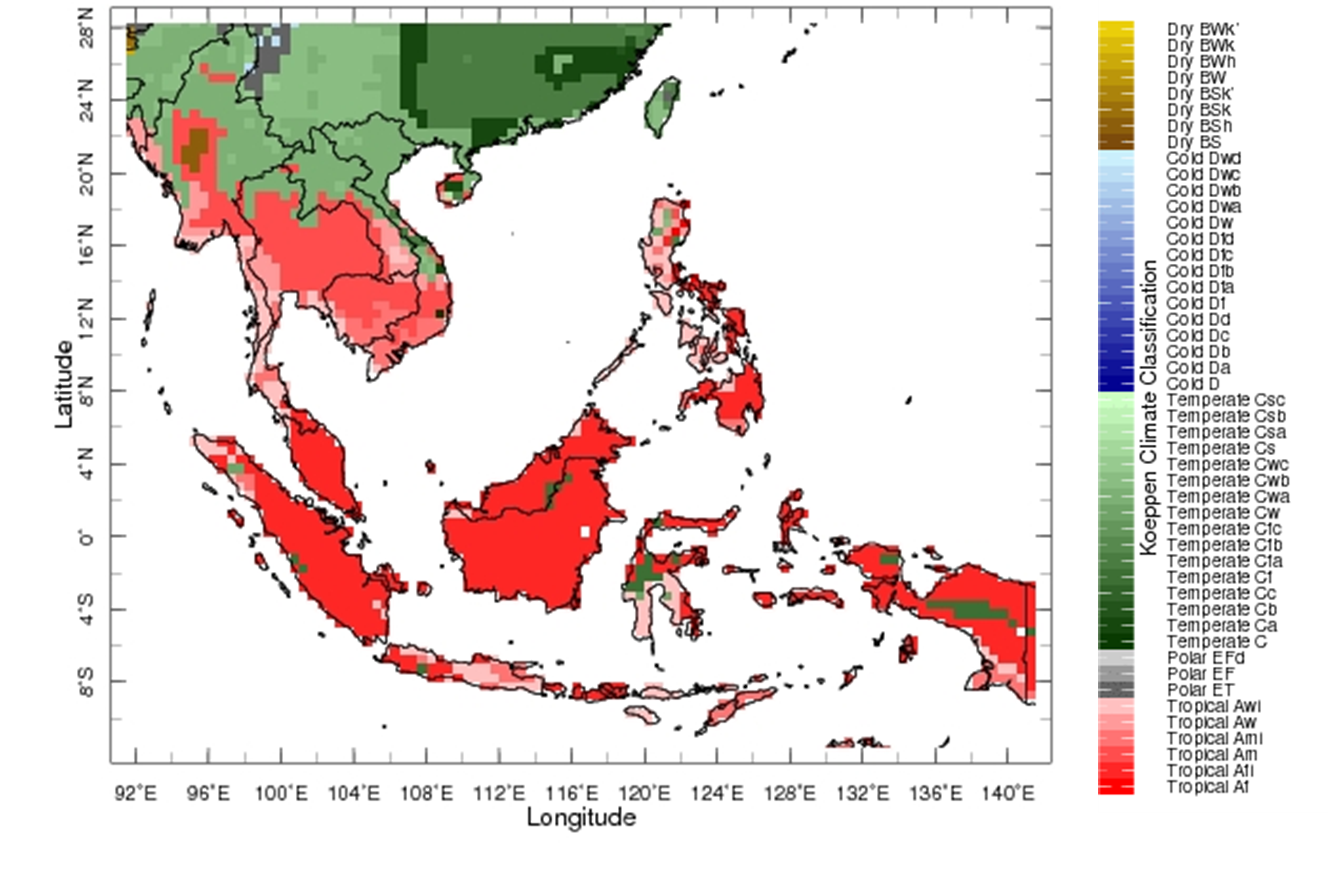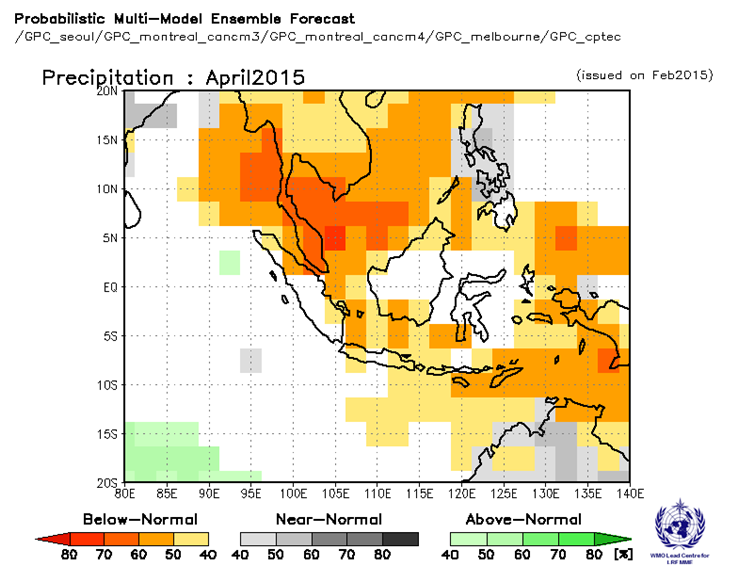Regional Climate

Koeppen Climate Classification for South East Asia. (Source: IRI Climate)
The Northeast Monsoon is characterised by a dry season in the northern ASEAN region (Cambodia, Lao PDR, Myanmar, northern Philippines, northern Thailand, and Vietnam) and a rainy season in the southern ASEAN region (Brunei Darussalam, Indonesia, Malaysia, southern Philippines, Singapore, southern Thailand). The converse applies for the Southwest Monsoon i.e. a wet season prevails in the northern ASEAN region and a dry season in the southern ASEAN region. Countries such as the Philippines, Vietnam and Myanmar are particularly at risk of being affected by Typhoons during this time of the year. During the Inter-Monsoon season, diurnal-type weather conditions characterised by afternoon and evening showers with light variable winds along the tropical belt predominate across the ASEAN region.

Monthly precipitation climatology for ASEAN region. (Source: IRI Climate)

Monthly wind climatology at 850 hPa pressure level for ASEAN region. (Source: IRI Climate)
During the traditional dry season, fires from land clearing and traditional slash-and-burn activities are common in the region. The situation is exacerbated when the dry season is enhanced due to disruptions in the normal monsoon cycle. These disruptions are caused by a combination of factors such as the El Niño. In 1992, 1995, 1997 and 2006, prolonged dry periods brought on by the El Niño created a catastrophe when the fires raged out of control, consequently wreaking havoc on the environment and economy of affected countries.
The El Niño phenomenon is a non-regular occurrence in the tropical pacific region where warmer waters develop over the Eastern Tropical Pacific Ocean along the coast of South America. In South East Asia, this brings drier weather and increases the risk of forest fires and smoke haze. The La Niña phenomenon is the reverse of the El Niño where cooler waters develop over the Eastern Tropical Pacific Ocean along the coast of South America. In South East Asia, higher than normal rainfall tends to occur during a La Niña episode which may result in an increased occurrence of floods.

Cross section of El Niño, neutral and La Niña conditions across the Tropical Pacific Ocean. (Image credit: NOAA)
The correlation between El Niño/La Niña and its associated weather impacts on South East Asia differ from one place to another and for different seasons.

Distribution of precipitation anomalies over South East Asia (Jun – Oct) for El Niño (left) and La Niña (right) years. (Image credit: IRI Climate)
The image above shows the precipitation anomalies averaged over the El Niño and La Niña years. For instance, the impact of El Niño is typically stronger over the southern and eastern part of South East Asia during the months of Jun – Oct.
A seasonal forecast provides forecast information about the general weather conditions at seasonal timescales up to several months ahead. Long range predictions rely on predicting components of the atmosphere and the oceans which show variations at large spatial and temporal scales. Among these key components is the sea-surface temperature – an important indicator in the El Niño Southern Oscillation (ENSO) cycle.

Example of probabilistic long range forecast using the multi-model ensemble. For areas nearby Peninsular Malaysia, the forecast is showing a probability of 50-70% of rainfall being in the below-normal (33%) tercile range. (Source: WMO LC LRF)
To account for the chaotic nature of the atmosphere, seasonal forecast adopts a probabilistic approach and the forecast weather condition is presented as an average over an extended period of time, usually with reference to climatology.
ASMC carries out monthly seasonal forecast predictions based on various seasonal model forecasts from the leading meteorological centres, supplemented by individual assessments from respective countries in South East Asia. The skilfulness of seasonal forecast relies greatly on the performance of seasonal models, which differ from one place to another and for different seasons of the year.

Receiver operating characteristic (ROC) score of UK GloSea5 seasonal hindcast for above-normal precipitation scenario for Dec – Feb (left) and May – Jul (right) over Asia region. Higher ROC score (indicated in red) means better model skill. (Source: UK Met Office)
For example, one way to assess the seasonal model skills is to examine the ROC score. From the figures above, we can see that ROC score map differs greatly from one season to another. During the period from Dec to Feb, a high ROC score region is observed mainly over the Philippines whereas during the period from May to Jul, a high ROC score region is observed over the near equatorial region such as Peninsular Malaysia and Sumatra.

